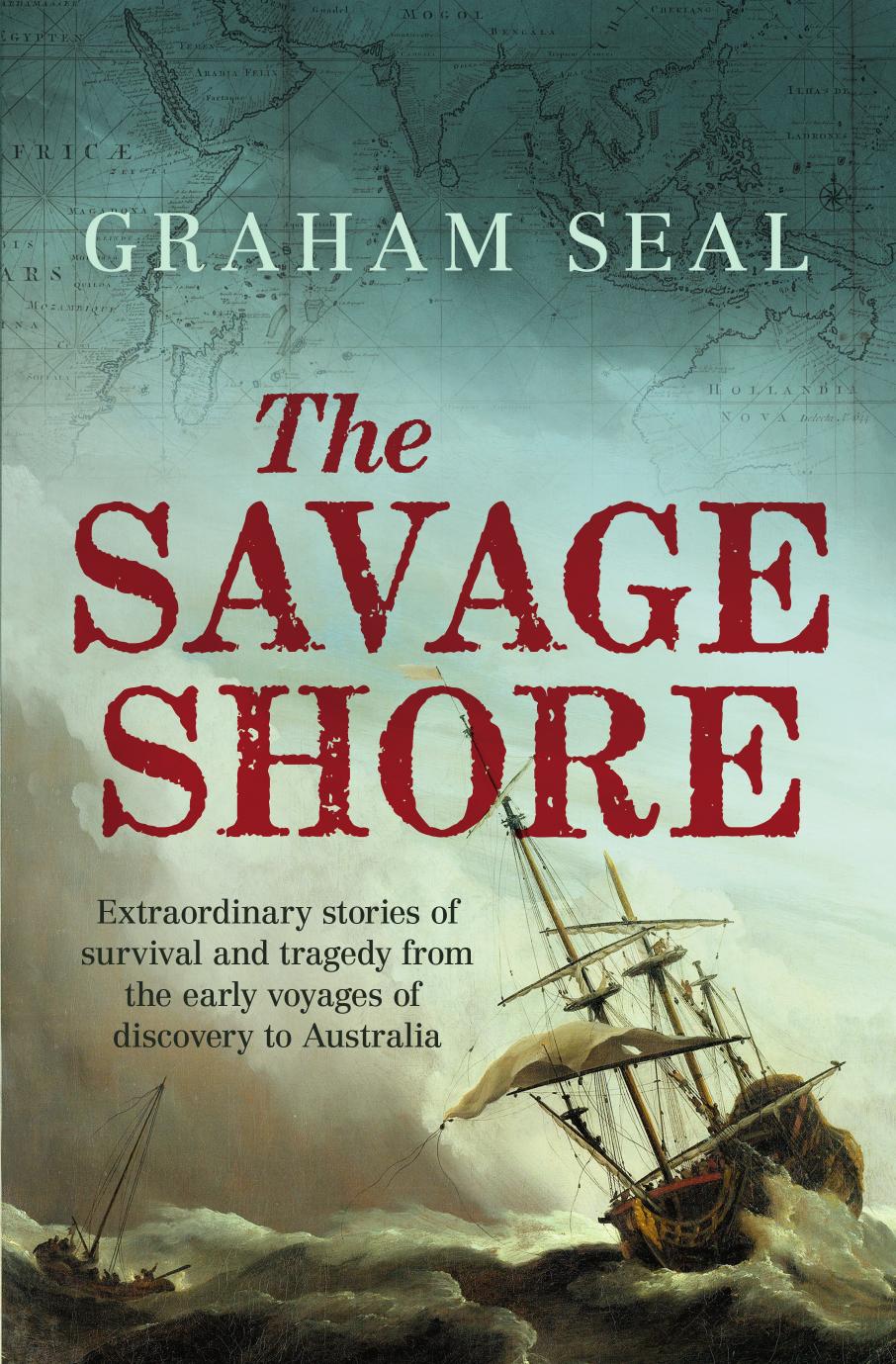The Savage Shore by Graham Seal

Author:Graham Seal
Language: eng
Format: epub, mobi, pdf
Publisher: Allen & Unwin
Published: 2015-05-27T04:00:00+00:00
8
The ship of doom
There are many ghosts haunting the castaway coasts of the Southland. The fate of perhaps 250 people thrown onto the desolate shore in the winter of 1712 is still unknown. In the empty space between certainty and a few tentative facts, there has always been speculation about the wreck of the Zuytdorp.
Built in six months over 1700–1701, the ship was named after the southern Zeeland settlement of ‘South Village’ or Zuiddorpe. A very fine vessel of the VOC’s largest class, more than 45 metres long and nearing 12 metres wide, the Zuytdorp could carry cargo of more than 1100 tons. Like most merchant ships of the time, she was well armed with forty cannon and strongly built for the rigours of voyaging to and from the East Indies. The Zuytdorp suffered storm damage on her maiden voyage in early 1702 but spent a successful few years trading in Asia and playing a significant role in the blockade of Surat. She returned to the Netherlands in 1710, departing once again the following year. But almost from the moment it began, this voyage was doomed.
A deadly voyage
The Zuytdorp left the Netherlands for Batavia via the Cape of Good Hope in the summer of 1711. Commanded by Marinus Wysvliet, she sailed in company with the smaller Belvliet commanded by the more experienced Dirck Blauuw. Wysvliet had not voyaged to the East Indies, while Blauuw had two previous Asian voyages to his name and had occupied senior ranks. Blauuw was in overall command of the two ships, but among the many mysteries of the Zuytdorp is why the fledgling Wysvliet was skippering one of the VOC’s largest and newest vessels to the far end of the globe.
This fine ship was carrying an estimated treasure of almost 250,000 silver guilders. The rest of the cargo was the usual assembly of food, implements and arms necessary to keep the ship and her 2861 sailors, soldiers, officers and passengers alive for the many months of the journey to the cape.
The ships made reasonable progress until they entered the region of infrequent winds known as ‘the doldrums’ at the end of September. By early November they had hardly moved any distance and many aboard were ill through malnutrition and the appalling lack of hygiene that was usual on sailing ships. Zuytdorp had forty-eight down with scurvy and not expected to live unless fresh food and water could be obtained. Against orders, they sailed for the island of São Tomé in the Gulf of Guinea. Fresh supplies were obtained but as the two ships loitered in these tropical climes men began to desert rather than face the rest of the deadly voyage.2 They were wise. After the ships left the island, those aboard began to die even more quickly.
At that time, it was the custom for the goods of those who died during a voyage to be auctioned off to the survivors, the proceeds being returned to their widows and grieving families back home. The journal
Download
The Savage Shore by Graham Seal.mobi
The Savage Shore by Graham Seal.pdf
This site does not store any files on its server. We only index and link to content provided by other sites. Please contact the content providers to delete copyright contents if any and email us, we'll remove relevant links or contents immediately.
Asking the Right Questions: A Guide to Critical Thinking by M. Neil Browne & Stuart M. Keeley(5357)
Autoboyography by Christina Lauren(5088)
Dialogue by Robert McKee(4160)
Eat That Frog! by Brian Tracy(4149)
Sticky Fingers by Joe Hagan(3912)
Journeys Out of the Body by Robert Monroe(3461)
Annapurna by Maurice Herzog(3299)
Full Circle by Michael Palin(3268)
Elements of Style 2017 by Richard De A'Morelli(3237)
Schaum's Quick Guide to Writing Great Short Stories by Margaret Lucke(3187)
The Art of Dramatic Writing: Its Basis in the Creative Interpretation of Human Motives by Egri Lajos(2857)
The Diviners by Libba Bray(2800)
Why I Write by George Orwell(2775)
The Mental Game of Writing: How to Overcome Obstacles, Stay Creative and Productive, and Free Your Mind for Success by James Scott Bell(2766)
In Patagonia by Bruce Chatwin(2755)
Atlas Obscura by Joshua Foer(2705)
The Fight by Norman Mailer(2701)
Venice by Jan Morris(2431)
The Elements of Style by William Strunk and E. B. White(2377)
